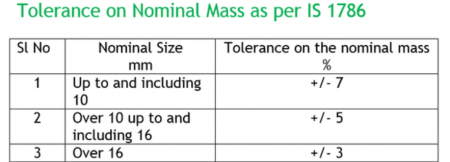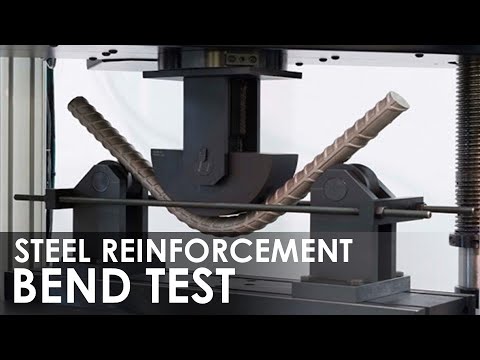🕑 Reading time: 1 minute
It is important to check the quality of reinforcement bars in order to ensure that the required characteristics are instilled into a structure. The quality check of the reinforcement bars brought to the site can be performed by the following inspections and tests:
Contents:
Inspections of Steel at Site
- Check the manufacturer's test certificate which shows the actual properties issued for a particular lot.
- Check the steel grade in the manufacturer certificate and look at whether it is as per the order.
- Check for rust and unwanted debris on the surface of steel bars. An undesirable amount of foreign material is not acceptable. Do check for any critical deformation or splits.
- Check the brand, the grade, and the diameter of the bar.
Tests on Steel at Site
After the above-mentioned inspection, the following tests can be performed on the site as per Indian Standard Code IS-1786.
1. Check for mass per meter run
The test involves cutting a 1 m length rod from different reinforcement bundles. A minimum of four sample bars must be taken to conduct the test. Measure the length of each bar from four sides and take the average. Weigh the bar and record it. For the respective bars, calculate the average weight/m (Do it for a minimum of four samples).

Compare the result with the tabulated value of theoretical weight given in IS 1786. Check if the observed variation is within the limit as per the standard code.
2. Bend Test and Re-bend Test
The rebar is bent to 180 degrees in the bend test as per IS-1599 in a mandrel (Mandrel specification as per IS 1786). Check for cracks or rupture on the tension side of the bent bar. If there are no such issues, the rebar has passed the bend test.

In the rebend test, the bar is bent at an angle of 135°. Keep the sample in boiling water for 30 minutes (Boil it to 100 degrees). After this, cool the sample. Once cooled, blend it to 157.5°. Check for rupture or cracks. If there is no issue, then the bar has passed the test.
Read More
How to Calculate Weight of Steel Bars?
8 Advanced Non-Destructive Testing Methods You Should Know About



